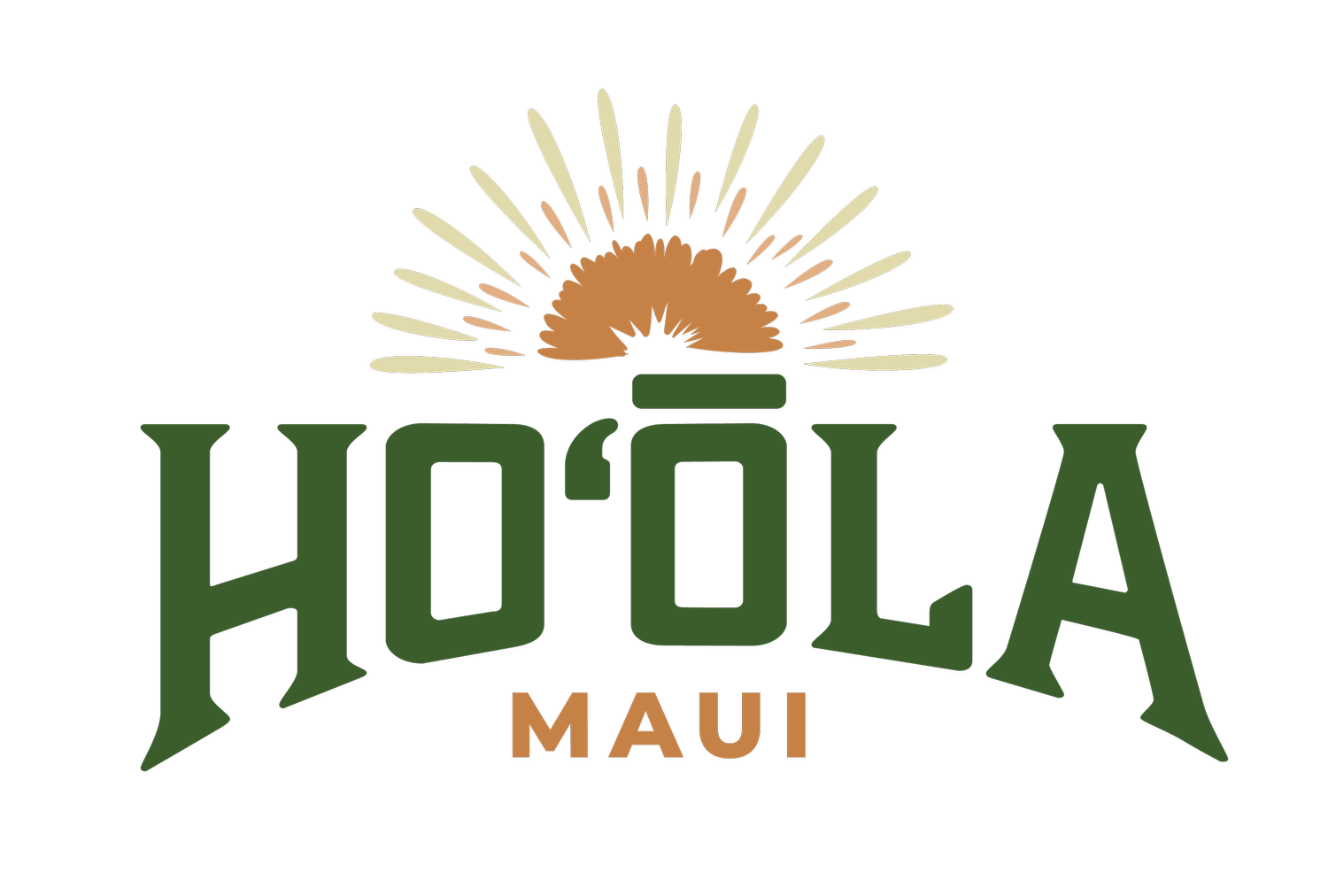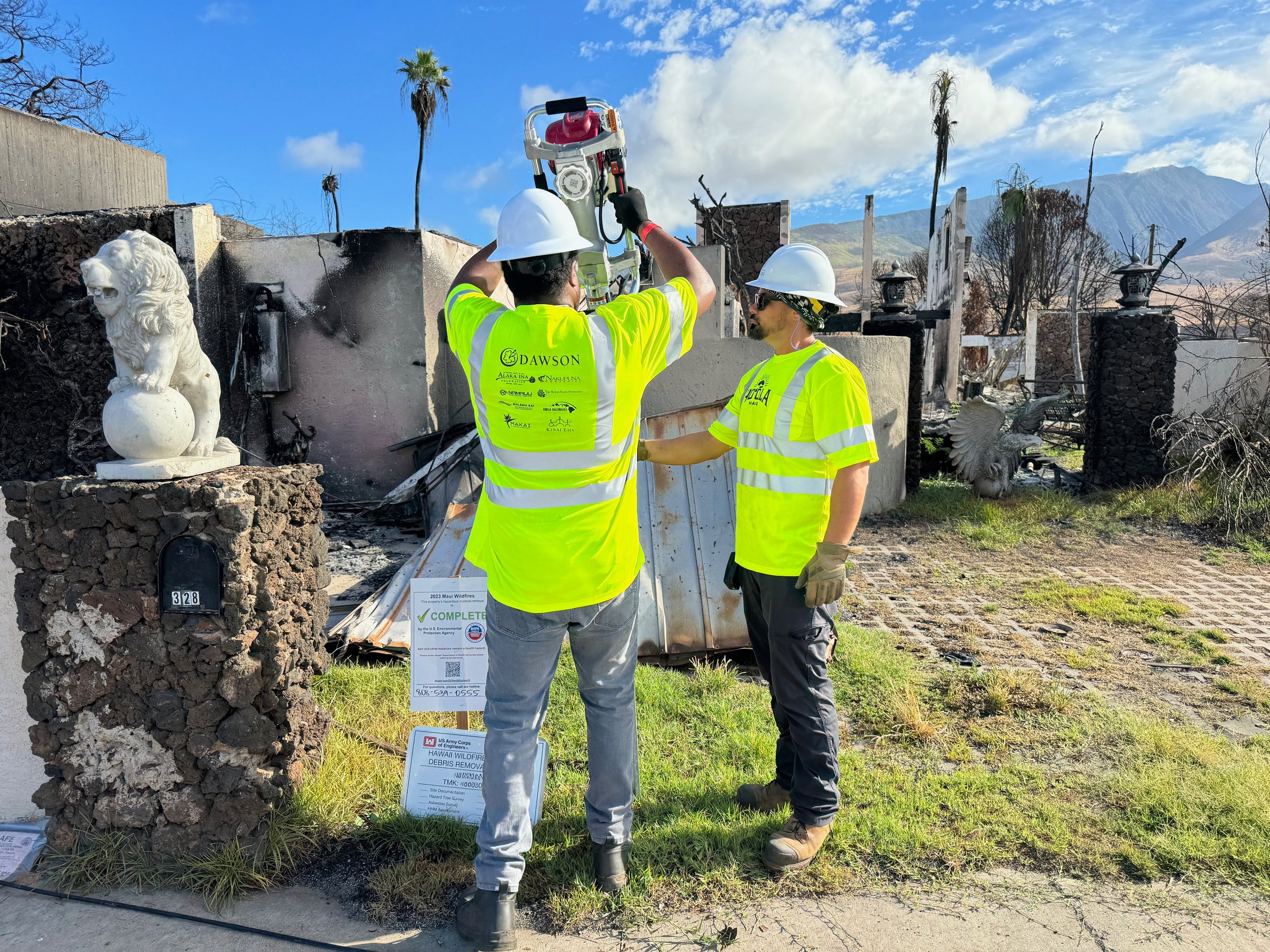Hoʻōla Maui in the News - Lahaina News
Mahalo nui to Lahaina News for the service this community-focused publication is providing to the people of West Maui - a huge amount of effort put in every day, by a team of local folks directly-impacted by the fires. The Lahaina News recently shared a story explaining the U.S. Army Corps of Engineers (USACE) property signs, with information provided by Hoʻōla Maui teams.
Lahaina News: Explaining the U.S. Army Corps of Engineers’ property signs
Reposted from Lahaina News:
LAHAINA — As part of the U.S. Army Corps of Engineers’ coordinated fire debris removal efforts in Lahaina, Kula and Olinda, DAWSON, a Hoʻōla Maui member company, and its partners are working through each zone and marking properties with property signs.
These signs show the property address and Tax Map Key (TMK), and provide a checklist of tasks that USACE contractors will check off as tasks are completed.
There are ten tasks on each property sign. Once each task has been completed by the contractor responsible, it is signed and dated.
�–� Site Documentation: Site survey teams cross reference the Tax Map Key (TMK) numbers, addresses, and a GIS-based mapping system to ensure each individual property is correctly identified.
�–� Hazard Tree Survey: Trained arborists assess trees affected by the wildfires to determine which ones present a possible hazard or will be unable to regrow safely, and which are healthy enough to survive for at least another 4-5 years. The trees are marked for preservation or removal accordingly.
�–� Asbestos Survey: A trained asbestos inspector evaluates properties. If asbestos contaminated materials are identified, samples are tested to confirm the contamination. Specific contaminated materials are then marked for special handling as hazardous material, and in some cases, removed prior to the next phase of cleanup work.
�–� HHM Assessment: Household Hazardous Waste or Materials (HHM) are common household materials that are flammable, corrosive or toxic. Examples could include gas cans, propane bottles, paint cans, aerosol cans, batteries or lithium batteries. These materials are removed by a trained group of hazardous materials specialists, containerized, and transported to a safe holding area for further processing.
�–� Authorized ROE: Collecting and processing Right of Entry (ROE) permits to send to USACE. The ROE gives USACE and their contractors the property owner’s permission to enter the property. Neither USACE nor their contractors can assess or remove debris from a property without this permission from the homeowner.
�–� Cultural Clearance: The cultural team will assess the property during DAWSON site assessments to determine if there are significant cultural items on the site.
�–� Debris Removal: Trained teams will remove debris from each property, including categories like concrete, including foundations; metal, including any vehicles; ash and debris; and the top few inches of contaminated soil, taking as much care as possible to avoid any unnecessary impact to important cultural and historic sites.
�–� Assessment Sampling: Once the debris and soil impacted by ash has been cleared, teams will sample the soil under the ash footprint to ensure that the contaminants are within the safety guidelines, as defined by the appropriate regulatory authorities, to be ready to rebuild.
�–� Final Erosion Control: Teams install stormwater and erosion control materials at each site to stabilize the soil from being washed away by rainwater or weather events until plants can begin to regrow and sites can be rebuilt.
�–� County Approval: Once all the previous steps are completed and signed off, the County of Maui will issue a final approval and the property can be released back to the owners.
Who is involved?
The overall progress for the tasks on each property sign is completed under USACE’s direction. Several government agencies, contractors, and organizations are working in coordination to complete the work needed for each task on the checklist:
�–� Site Documentation: DAWSON, along with Hoʻōla Maui NHO members Nakupuna, Krilla Kaleiwahea, and Kinai ʻEha (sign installation and quality control), and Hoʻōla Maui partner DebrisTech (data collection);
�–� Hazard Tree Survey: DAWSON, along with Hoʻōla Maui NHO partners Forgen, Kane’s Legacy Tree Services, and ClimbingHI (arborists);
�–� Asbestos Survey: DAWSON and Hoʻōla Maui NHO partner Environmental Risk Analysis (testing);
�–� HHM Assessment: DAWSON and Hoʻōla Maui NHO members Nakupuna, Krilla Kaleiwahea, and Kinai ʻEha (site assessments) with Hoʻōla Maui partners Forgen (site assessments and data collection) and Unitek (removal for materials of concern);
�–� Authorized ROE: County of Maui;
�–� Cultural Clearance: AEPAC (USACE’s prime contractor for cultural monitoring during
the current phase of work);
�–� Debris Removal: ECC inc. (USACE’s Advanced Contracting Initiative program
contractor for the next phase of the private property debris removal);
�–� Assessment Sampling: ECC Inc.;
�–� Final Erosion Control: ECC Inc.;
�–� County Approval: County of Maui.
RESOURCES
USACE has created an online tool where property owners can check the progress status of their individual properties. You can enter your street address, TMK number or Assessor’s Parcel Number (APN) to look up your property.
The County of Maui has created a website, MauiRecovers.org, which has resources for community members impacted by the wildfires.
Ho’ōla Maui, a hui of Native Hawaiian Organizations and other partners committed to the safe, timely and thorough cleanup of West Maui devastated by the wildfires, is sharing project updates at www.hoolamaui.com. Sign up for the email newsletter to receive news and updates about the cleanup effort progress.
Frequently asked questions
What is “Right of Entry,” and how is it related to fire debris removal? In order to be eligible for the government-sponsored cleanup of private properties, property owners must complete a Right of Entry (ROE) that gives the Army Corps of Engineers and their contractors permission to access the property. For more information about ROE and to submit your ROE application online, visit MauiRecovers.org. You can also receive in-person assistance with your ROE application at one of the following locations:
�–� Lahaina Civic Center, Disaster Recovery Center, 1840 Honoapi’ilani Highway, Lahaina, open 8 a.m. to 6 p.m., Monday through Saturday;
�–� Kalana O Maui Building Lobby, County of Maui, 200 S. High St., Wailuku, open 8 a.m. to 6 p.m., Monday through Saturday;
�–� Kako’o Maui – Council for Native Hawaiian Advancement (CNHA), 70 Kaahumanu Avenue, Kahului (Maui Mall Village, next to Subway), open 8 a.m. to 6 p.m. Monday through Saturday.
When will all ten tasks on my property sign’s checklist be complete? This phase of the hazardous site assessment and cleanup effort is expected to be complete in January 2024.
I submitted my Right of Entry (ROE) application, but it’s not checked off on my property sign yet. Why? Once the County of Maui has fully processed and vetted your ROE application, that task on the checklist will be marked as complete. If your property sign does not have Authorized ROE checked off yet, that means the County of Maui is still reviewing your ROE application.
What if I don’t want USACE to remove fire debris from my property? If you do not want to participate in the USACE Consolidated Debris Removal Program, you can choose to pursue alternate debris removal with a private contractor you hire. You must submit an alternate debris removal work plan to the County of Maui before any debris is removed. Visit MauiRecovers.org for more information about alternate debris removal.

